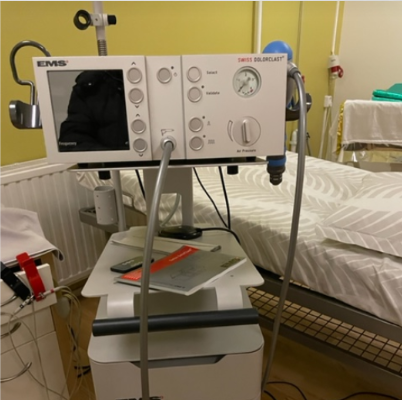Shockwave therapy

How do shockwaves work?
Mechanical shockwave impulses in damaged tissues trigger a series of positive processes—such as the absorption of calcifications and inflammation, relaxation of contracted muscle structures, and provision of tissue nourishment and regeneration.
It’s a non-invasive method that doesn’t require anesthesia. Only minimal discomfort may be felt in specific areas, but it’s expected. The procedure induces a tingling and fatigue sensation.
When is shockwave therapy recommended?
This physical therapy procedure is recommended when massages and gentler physical treatments are ineffective. It can be used quite broadly, but it’s most commonly prescribed when:
- Joint capsules are inflamed, causing acute or chronic pain due to strains, overuse, or post-sport/lifestyle traumas, such as tennis elbow—pain in the elbow joint—and others, like the wrists, shoulder joints,
- There’s inflammation of knee ligaments, also known as “jumper’s knee,” commonly found in athletes and dancers,
- There’s back pain,
- Achilles tendonitis, inflammation of foot tendons, or heel spurs are present,
- Various muscle contractions and inflammations, known as trigger points, are found in areas like the neck, shoulder zone, and between the shoulder blades—often found in individuals who spend prolonged periods at a computer. Also, inflammation of the buttock muscle, etc.,
- Scar tissue has thickened, and therapy can soften it,
- Men suffer from erectile dysfunction; it improves blood circulation in the genital area, creates new blood vessels, and reorganizes blood flow positively, among other benefits.
Once again, shockwave therapy is non-invasive and generally involves minimal discomfort. Sensations of tingling and fatigue are common during the procedure.
